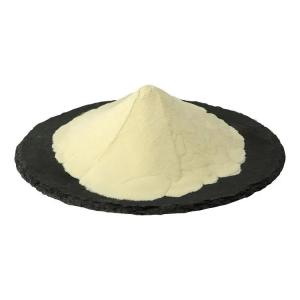News list
News Center
Hot Product
News
Phosphoric acid in modern dietary analysis
Time:2025-10-27
1. Introduction
Phosphoric acid (H₃PO₄) is a widely used inorganic compound found in numerous food and beverage products. In modern dietary analysis, phosphoric acid is of particular interest due to its dual role as both a functional additive and a source of phosphorus, an essential mineral for human health. The assessment of phosphoric acid in diets helps researchers and nutritionists evaluate its contribution to overall phosphorus intake and its potential effects on nutrient balance.
2. Sources of Phosphoric Acid in the Diet
Phosphoric acid enters the human diet primarily through processed foods and beverages. The most common sources include:
Carbonated soft drinks: Used as an acidulant to enhance flavor and preserve freshness.
Processed cheeses and dairy products: Added to regulate acidity and texture.
Baked goods and meats: Employed as a leavening aid or moisture-retaining agent.
In addition to these, certain phosphate-containing additives also release phosphoric acid during digestion, further contributing to dietary phosphorus levels.
3. Analytical Methods for Phosphoric Acid Determination
Modern dietary analysis utilizes advanced analytical techniques to quantify phosphoric acid and related phosphates in food products. Common methods include:
Ion chromatography (IC): Offers high sensitivity for detecting inorganic phosphates.
Spectrophotometric assays: Provide rapid screening for total phosphorus content.
Inductively coupled plasma–optical emission spectrometry (ICP-OES): Enables precise quantification of phosphorus in complex food matrices.
These analytical tools help ensure accurate assessment of phosphoric acid intake and compliance with food safety regulations.
4. Nutritional Considerations in Phosphoric Acid Intake
In nutritional studies, phosphoric acid is evaluated in relation to its influence on mineral balance, especially with calcium and magnesium. Excessive consumption of phosphoric acid–containing foods or beverages can alter the calcium-to-phosphorus ratio in the body, which is a key factor in bone and metabolic health. Therefore, dietary analysis often focuses on both the quantity and proportion of phosphorus from natural and synthetic sources.
5. Role in Food Technology and Formulation
From a food technology perspective, phosphoric acid serves multiple functions:
Acidulant: Controls pH and enhances taste stability.
Preservative: Inhibits microbial growth in acidic environments.
Buffering agent: Maintains desired consistency and prevents spoilage.
These technological benefits make phosphoric acid a valuable component in modern food formulation, though its nutritional implications require balanced evaluation.
6. Conclusion
Phosphoric acid remains a significant focus in modern dietary analysis due to its widespread use and nutritional relevance. Advances in analytical methodologies have made it possible to monitor its intake accurately and understand its interactions within the human diet. Continued research and public awareness are essential to maintaining a balanced approach—leveraging phosphoric acid’s functional advantages while ensuring nutritional harmony in everyday consumption.
Phosphoric acid (H₃PO₄) is a widely used inorganic compound found in numerous food and beverage products. In modern dietary analysis, phosphoric acid is of particular interest due to its dual role as both a functional additive and a source of phosphorus, an essential mineral for human health. The assessment of phosphoric acid in diets helps researchers and nutritionists evaluate its contribution to overall phosphorus intake and its potential effects on nutrient balance.
2. Sources of Phosphoric Acid in the Diet
Phosphoric acid enters the human diet primarily through processed foods and beverages. The most common sources include:
Carbonated soft drinks: Used as an acidulant to enhance flavor and preserve freshness.
Processed cheeses and dairy products: Added to regulate acidity and texture.
Baked goods and meats: Employed as a leavening aid or moisture-retaining agent.
In addition to these, certain phosphate-containing additives also release phosphoric acid during digestion, further contributing to dietary phosphorus levels.
3. Analytical Methods for Phosphoric Acid Determination
Modern dietary analysis utilizes advanced analytical techniques to quantify phosphoric acid and related phosphates in food products. Common methods include:
Ion chromatography (IC): Offers high sensitivity for detecting inorganic phosphates.
Spectrophotometric assays: Provide rapid screening for total phosphorus content.
Inductively coupled plasma–optical emission spectrometry (ICP-OES): Enables precise quantification of phosphorus in complex food matrices.
These analytical tools help ensure accurate assessment of phosphoric acid intake and compliance with food safety regulations.
4. Nutritional Considerations in Phosphoric Acid Intake
In nutritional studies, phosphoric acid is evaluated in relation to its influence on mineral balance, especially with calcium and magnesium. Excessive consumption of phosphoric acid–containing foods or beverages can alter the calcium-to-phosphorus ratio in the body, which is a key factor in bone and metabolic health. Therefore, dietary analysis often focuses on both the quantity and proportion of phosphorus from natural and synthetic sources.
5. Role in Food Technology and Formulation
From a food technology perspective, phosphoric acid serves multiple functions:
Acidulant: Controls pH and enhances taste stability.
Preservative: Inhibits microbial growth in acidic environments.
Buffering agent: Maintains desired consistency and prevents spoilage.
These technological benefits make phosphoric acid a valuable component in modern food formulation, though its nutritional implications require balanced evaluation.
6. Conclusion
Phosphoric acid remains a significant focus in modern dietary analysis due to its widespread use and nutritional relevance. Advances in analytical methodologies have made it possible to monitor its intake accurately and understand its interactions within the human diet. Continued research and public awareness are essential to maintaining a balanced approach—leveraging phosphoric acid’s functional advantages while ensuring nutritional harmony in everyday consumption.


 CN
CN





